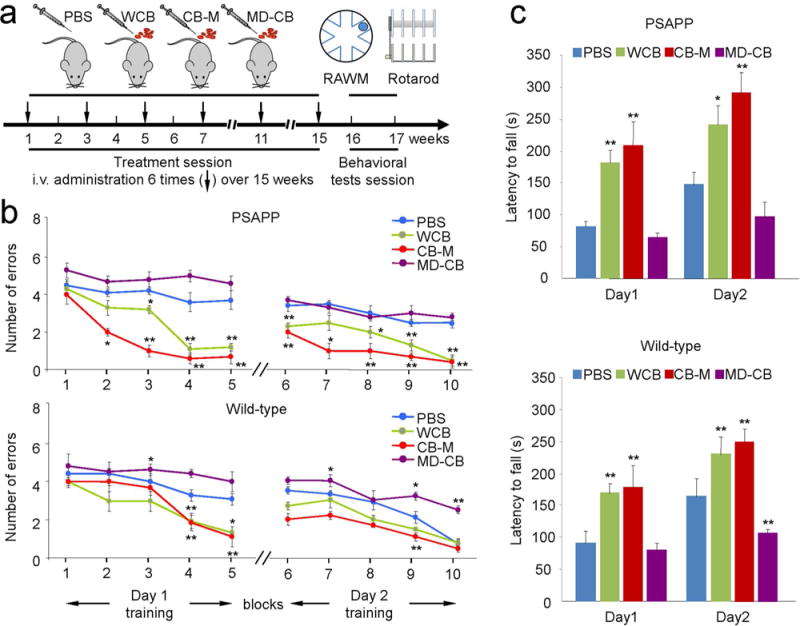Figure 3.

Long-term (4-month) administration of HUCBC-derived monocyte improves learning, memory, and motor function. Both PSAPP and aged-match WT control mice were cognitively tested after long-term monocyte administration. (a) Schematic diagram of HUCBC treatment schedule and behavioral testing in PSAPP and WT mice. (b) Hippocampal-dependent learning and memory function was assessed by RAWM test after treatment completion. The cognitive activity was presented as numbers of entry arm errors before finding the platform. Consistent with the 2-month treatment data, WCB- and CB-M-treated PSAPP mice showed improved cognitive function compared with PBS-treated PSAPP mice. WT littermates also showed similar effects with each treatment paradigm. MD-CB treatment did not show behavioral improvement and even exacerbated the cognitive function of WT mice. (c) Motor activity was assessed using rotarod test after monocyte administration. WCB- or CB-M-treated PSAPP mice significantly improve the motor activity, assessed as latency to fall, compared to PBS-treated group, while MD-CB treatment progressively impaired the motor function of WT control group. All data are shown as the mean ± SEM (*p < 0.05; **p < 0.01) and analyzed by one-way analysis of variance (ANOVA) with LSD post hoc test (b), or one-way ANOVA with Bonferroni post hoc test (c).
